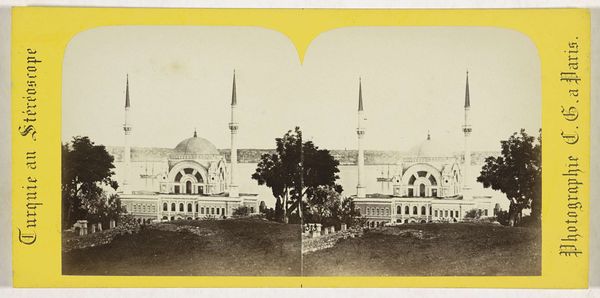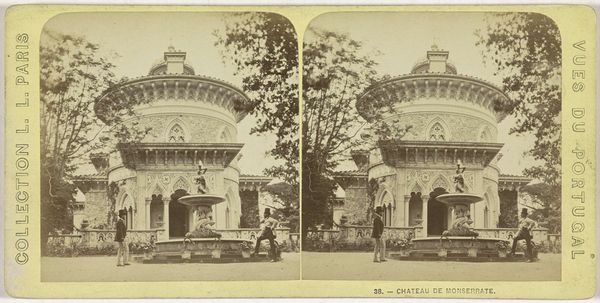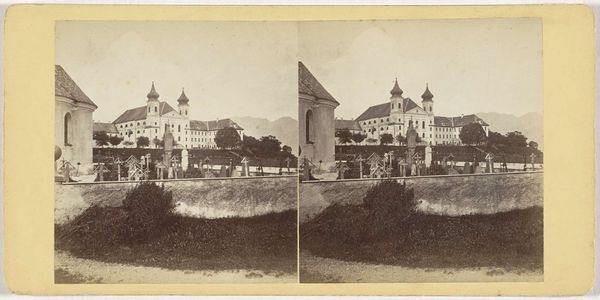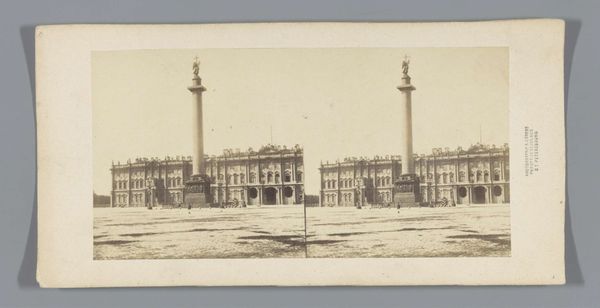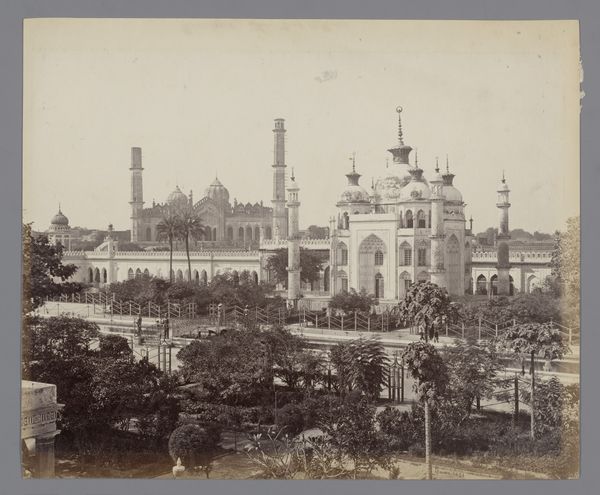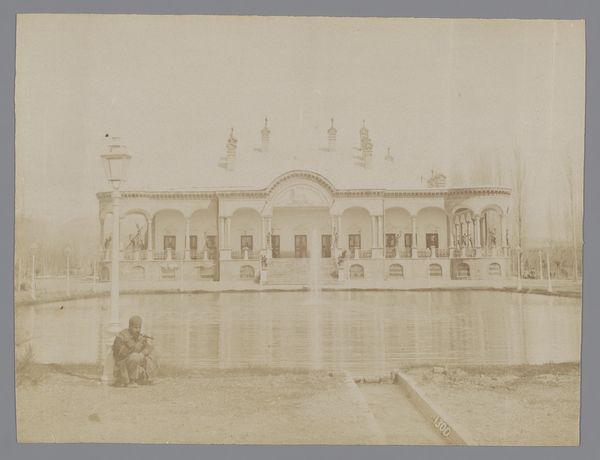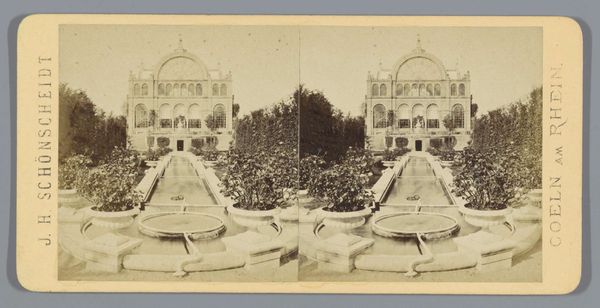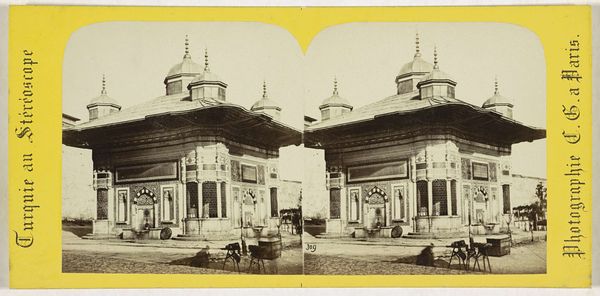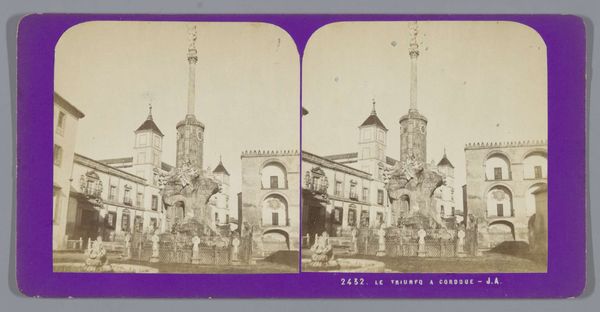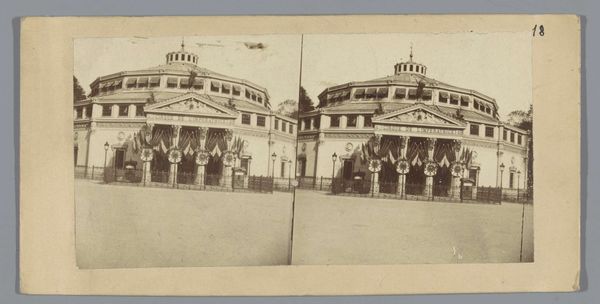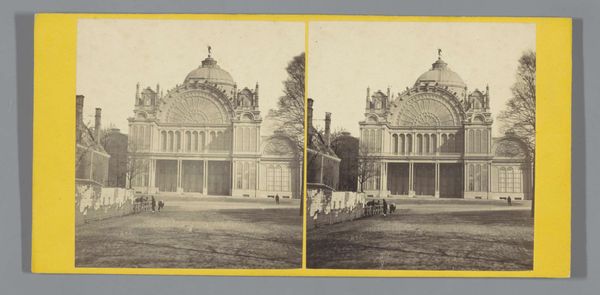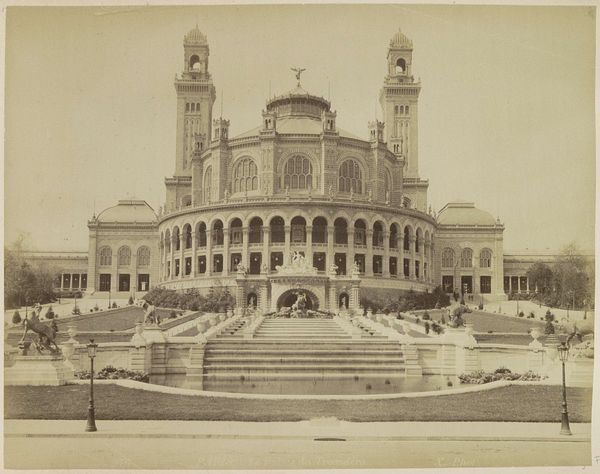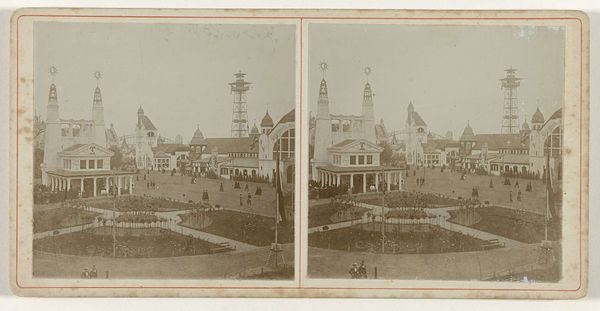
print, photography
# print
#
landscape
#
photography
#
orientalism
#
cityscape
Dimensions: height 87 mm, width 177 mm
Copyright: Rijks Museum: Open Domain
Curator: This steroscopic photograph from between 1868 and 1888 captures a structure known as "Alhambra" located in the Rosenaupark, Nuremberg, brought to us through the lens of Johann Friedrich Stiehm. Editor: It’s quite imposing, yet strangely artificial. Like a mirage rendered in sepia tones, sitting rather starkly in its surroundings. There's a stage-set quality to it. Curator: That perception is quite apt. This image and indeed, the "Alhambra" itself, engages with the style of Orientalism popular during that era. It reflects Europe's fascination with and often misinterpretation of Eastern cultures, manifested here as architectural pastiche. The date range places it squarely in a period where colonial power dynamics shaped artistic expression. Editor: Yes, it's less about authenticity and more about projecting power through appropriation. I can’t help but consider the symbols—the arches, the dome—stripped from their original cultural contexts and reassembled to create an exotic spectacle in Germany. Curator: Indeed. And let's consider what it signifies. As an "Alhambra," named after the palace in Granada, it invites reflections on cultural exchange, or rather, the lopsided nature of cultural exchange under colonialism. What aspects are being celebrated, and what are being overlooked or misrepresented in the adoption of the so-called "oriental" style? It's impossible to extricate the visual enjoyment of this photograph from those political undercurrents. Editor: Seeing this through the lens of symbolism, the architectural details almost seem to speak of longing – longing for a past, longing for an “Orient” constructed by Western imagination. The fact that it’s photographed rather than painted amplifies the strange claim to reality it makes. Curator: Precisely. The photographic medium lends it a certain sense of documentary truth, while the subject itself is a fabrication. Perhaps what Stiehm captures here is not just a building but an ideological landscape. Editor: A perfect illusion caught in time, provoking us to consider not just the art itself, but the complex cultural forces that shaped it. Curator: I couldn't agree more; these reflections prompt critical examination about representation and power, elements that resonate even today.
Comments
No comments
Be the first to comment and join the conversation on the ultimate creative platform.
